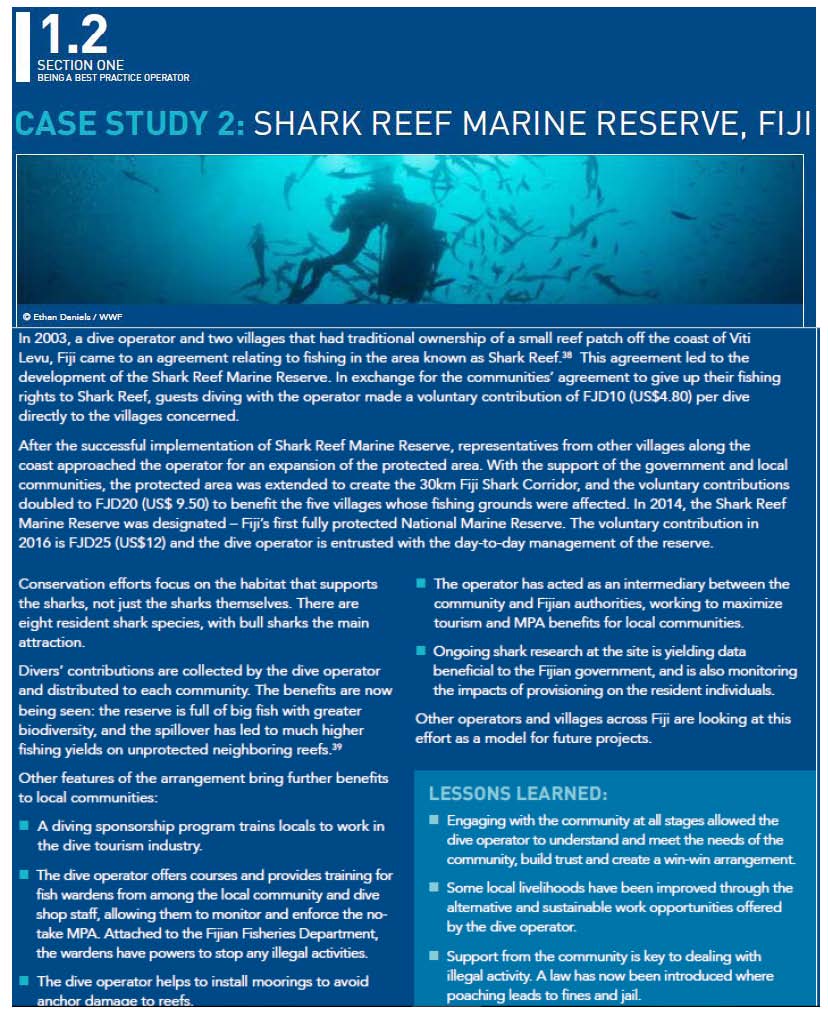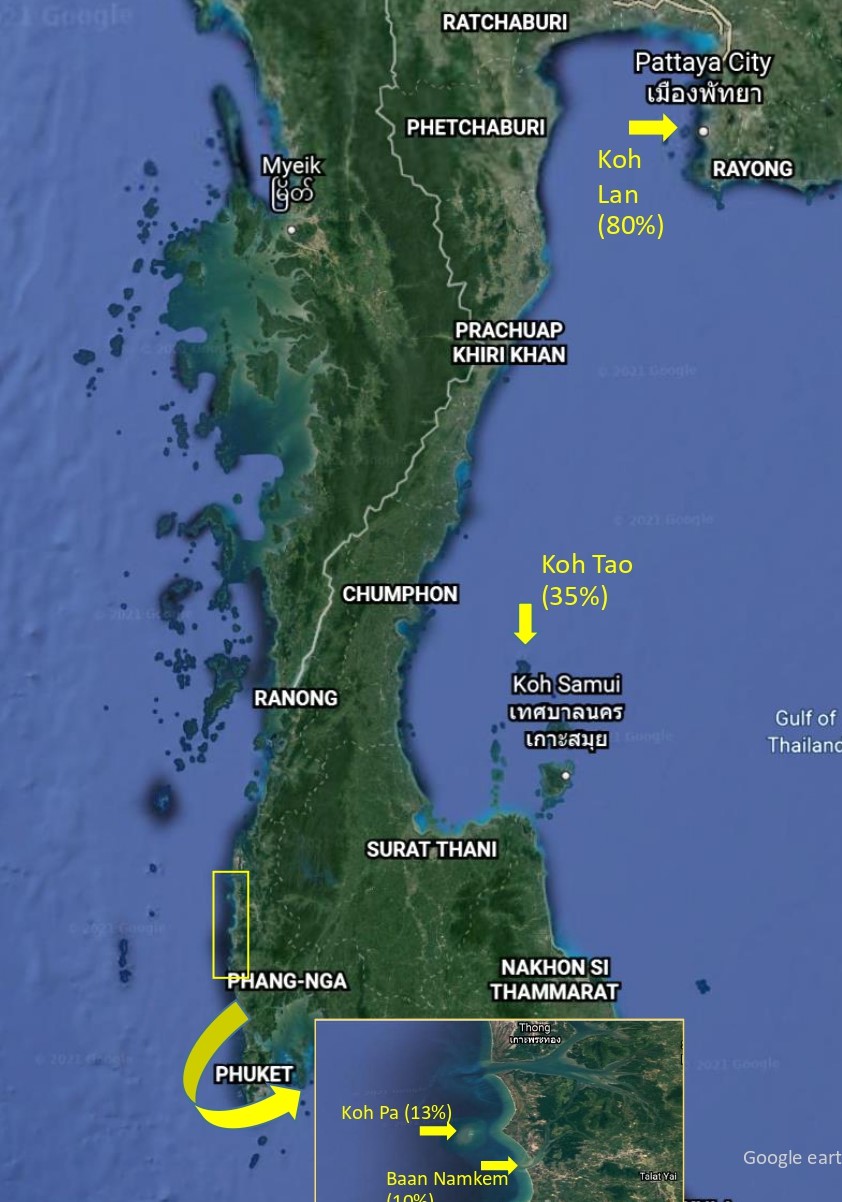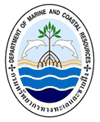Rewilding Thailand: a scuba diverís perspective
By Robin G. Fewster.
Humanity's ever growing encroachment into Mother Nature has reduced the once mighty forests to shadows of what they once were. In the oceans, overfishing and plastic pollution are destroying wildlife at a rate that is truly alarming to scientists and anyone who cares about the sea. So what can we do to help Nature survive the Anthropocene, this era dominated by humans?
Rewilding the land is an idea that has been around for some time. Originally a term coined by Dave Foreman, rewilding consists in the protection of natural habitats, the creation of pathways or corridors along which wild animals can travel, and the reintroduction of species which have been driven to extinction, such as European bison, beavers, and wolves. It has sometimes been a victim of its own success and farmers have complained about the impact that the reintroduction of large predators, such as wolves, has had on their flocks.
In the sea, rewilding has a number of systemic differences. The idea of protecting ecosystem cores is already well established, with Marine Protected Areas spanning tens of thousands of square kilometres of sea area. The establishment of corridors along which wildlife can travel onland, e.g. wildlife fences along motorways with wildlife bridges at regular points to ensure that populations can travel to meet each other, is highly visible in many Western countries. It is very different in an environment where most of the migration occurs in the water column or on the sea bed, terrains that have no permanent vehicular roadkill (apart from shipping impacts at the surface, e.g. Whales and other surfacing animals injured or killed by passing ships).
The Samaesan archipelago is located near Sattahip naval base, about three hours' drive to the south-east of Bangkok. It's a fishing village with a large fleet of trawler boats, where local dive shops regularly take students because of its natural beauty and the lack of human impact from the navy-administered, unpopulated islands. A wonderful area to go scuba diving and snorkelling, with beautiful coral, historic shipwrecks, and many fish, even – a few years ago – sharks. Sighting a bamboo shark used to be guaranteed by dive leaders in this area a decade ago. Now, there are so few left that it's extremely rare to see one.
Several years ago, local dive shops led by an environmental diving organisation began a rewilding project where large numbers of sharks were bought from the local fishing community and released back onto reefs. This served the dual purpose of reintroducing sharks so that they could accomplish their important ecological role, and making sites more interesting for divers. Although the project ended due to high levels of adult bamboo shark mortality in transport, the story lived on, and professionals in the local community have been talking about it for years.
Having moved close to an animal market after a change in his workplace in Bangkok, an English teacher and environmental scuba diver volunteer and trainee found a shop which sold sharks for aquariums. To road test shark transport and release, he bought two juvenile bamboo sharks and took them down to Pattaya Underwater World for housing overnight, and then onto a dive boat the next day when they were released onto a coral reef. The event caused so much interest from scuba professionals and their students that he decided to continue finding captive sharks and letting them loose into the sea. Due to having trained with various environmental diving organisations, he was aware that shark populations are in steep decline, as are parrotfish and other coral reef species, and had asked experts about releasing parrot and triggerfish caught by the local fishing fleet – they had voiced approval. However, although there were plenty of dead parrotfish to be found in local markets, live ones were nowhere to be found. Sharks, however, were easier.
Having successfully bought, transported and released two adult bamboo sharks into the sea, using a transportation apparatus different from the traditional aquarium transport model, he was able to increase the probability that the high mortality levels of the previous operation would not reoccur using this system. Rather than transporting and releasing a large number of sharks at a time, operational requirements and caution dictated that releasing no more than two or three at a time would ensure a greater spread of sharks over a larger area, reducing the likelihood of their being caught and eaten by local fishers, and increasing the likelihood of their finding what remained of the local bamboo shark population cores, in order to strengthen their genetic diversity and breeding chances.
Opposition to this project has been voiced by some dive professionals and environmentalists, but support has also come from other professionals, environmentalists and more importantly, scientists.
The main opposition has been that released sharks might just be caught again, thereby creating a cycle in which sharks were released, captured, sold and released again. Although this theory contains some valid points, the bamboo shark population crash is so severe on local dive sites that something should be done to protect surviving population cores. Although there is some evidence of local fishermen beginning to fish for sharks in Samaesan, this could be due to the fact that they had little chance of catching them there before. Bamboo sharks are a mostly nocturnal species and it may be that spearfishing using scuba is responsible for the population crash.
The second opposition to this project is that the sharks might introduce disease into the marine environment. While this is a valid theory and contains some relevant ideas, it is more applicable to fish sourced from aquariums and which might have acquired communicable disease and parasites from fish and invertebrates which have brought them from faraway areas. All sharks released after the first two have come from the local area, bycatch from trawlers which operate in the Gulf of Thailand. Therefore any disease or parasites which they might house have come from the local sea and return to the same environment. They have also been checked for specifically shark-related illness such as fin rot and inflammation on the underside. Only sharks with no visible injuries have been released.
After a pregnant female laid two eggs while in quarantine at an ecofarm in Samaesan, it was suggested by a member of the Thai government's Greenfins programme that this could be a pilot project to protect the next generation of bamboo sharks. Whereas a second, highly pregnant female was released into a nearby area, it will be difficult to determine whether or not she was able to successfully lay her eggs. Females will therefore be encouraged to lay before being freed.
Mantis shrimps were once plentiful in Samaesan, but have now largely disappeared, therefore two of these have been acquired for a breeding programme. They come from further away but still within a range of neighbouring ASEAN countries. They had also been kept in relatively sterile seafood tanks rather than highly diverse show aquariums.
The project is gaining momentum and in time, it is hoped that the marine protected areas in Samaesan will be enlarged, creating a spillover of fish into surrounding areas, thereby supporting the local village community and providing more opportunities and motivation for dive centres to participate in ecotourism.

https://www.projectaware.org/publication/responsible-shark-and-ray-tourism-guide-best-practice
Additional sources:
https://www.sciencedirect.com/science/article/pii/B9780128096659092028
https://www.rewildingeurope.com/about/










